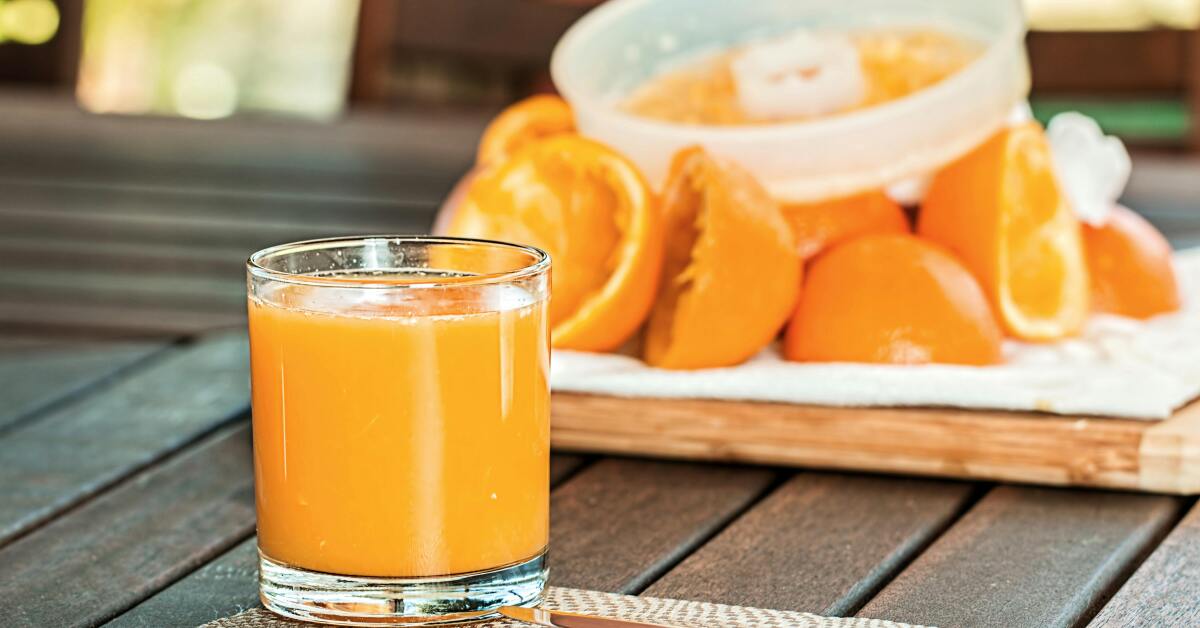The £5.30 Orange Juice That Explains Why Supermarket Prices Are Still Sky-High

Key Takeaways:
- From 76p to £1.79 — Supermarket orange juice prices have risen 134% since 2020, driven by droughts, disease and supply-chain shocks.
- Brazil dominates the market — Two-thirds of its orange trees are infected with citrus greening, pushing prices to record highs.
- Trade wars and tariffs bite — US and Canadian tariffs, plus new UK packaging fees, have compounded costs for producers and consumers alike.
- Substitutes and blends — Manufacturers are cutting costs by mixing orange with cheaper fruits like mango or mandarin.
- The new normal — Food inflation may ease, but structural reliance on imports and climate-affected crops means high prices could be here to stay.
When Your Morning Juice Costs More Than a Coffee
Once a humble breakfast staple, orange juice has become a quiet symbol of Britain’s inflation story. In 2020, a litre of supermarket own-label juice cost 76p. Today, it averages £1.79 — a 134% increase in five years. Even cafés have joined the squeeze, with £3.50–£4 glasses now the norm.
One diner in Kent was stunned to pay £9 for a simple orange juice and lemonade — the juice alone costing £5.30. Behind that price tag lies a tangled story of climate shocks, crop disease, trade wars and global supply dependence.
From Florida to Basildon: A Global Supply Crisis
At an industrial site in Basildon, Essex, barrels of frozen orange concentrate arrive from Brazil — the source of most of the world’s orange juice. Maxim McDonald, whose family firm has imported juice since the 1940s, says prices have been “insane.”
Global prices for orange concentrate have quadrupled, from about $1.12 to $5.30 per pound, after years of poor harvests caused by droughts and citrus greening disease, a bacterial infection spread by insects.
Brazil’s 2024 harvest was its worst since 1988. In some areas, two-thirds of trees are infected. Florida — once a major exporter — fared no better, suffering hurricanes and a similar disease outbreak. The result: fewer oranges, less sweetness, and record costs.
Why You’re Paying More for Less
When supplies collapse, manufacturers cut corners. In 2025, many juice producers quietly began blending orange with cheaper fruits such as mango, mandarin or pear. Mandarin concentrate costs less and helps retain sweetness lost to disease-stricken oranges.
Even premium brands are affected. Tropicana’s US parent had to restructure its debts, while Pepsi offloaded most of its stake. Tropicana’s new “Essentials” range now mixes fruits to stay affordable — a trend mirrored on British supermarket shelves.
Trade Wars and Tariffs Add to the Squeeze
Beyond weather and disease, trade politics has made matters worse.
- US tariffs: The Trump administration imposed a 10% duty on orange juice from Brazil.
- Canadian retaliation: Canada slapped counter-tariffs on US orange juice, cutting trade to a 20-year low.
- UK policy: Britain removed some tariffs in 2024, but not on all blends — and any savings were dwarfed by soaring base prices.
Meanwhile, new UK packaging regulations, known as Extended Producer Responsibility, require companies to pay weight-based recycling fees. These costs — especially for glass bottles — are filtering straight into consumer prices.
When the Harvest Fights Back
There’s one glimmer of hope: Brazil’s next crop is recovering. But global orange juice demand has fallen by nearly 30% over the past two decades.
Consumers in Western markets have grown wary of sugar content, while younger generations simply aren’t in the habit of drinking juice daily. As demand dips in Europe and the US, it’s rising in China, South Africa and India, where growing middle classes are discovering OJ for the first time.
Yet, even with better weather, the supply chain remains fragile. A handful of industrial conglomerates dominate orange production, controlling prices in a way reminiscent of OPEC’s grip on oil.
The Wider Picture: When Everyday Food Becomes a Luxury
Orange juice isn’t alone in this story. According to the Office for National Statistics:
- Beef and veal are up nearly 25% year-on-year.
- Butter has climbed 19%, chocolate and coffee about 15%, and milk more than 12%.
These increases suggest that supermarkets and suppliers may be recouping margins they initially absorbed during the height of inflation — meaning prices stay high even after global costs ease.
As Professor Steve McCorriston of the University of Exeter puts it:
“Retailers may not have passed through the full cost increases at first. Now they’re clawing back margins they lost.”
In short: when prices rise, they rise fast — but they fall very slowly.
Can Britain Ever Escape the Food-Price Trap?
The deeper issue is structural. Britain imports most of its fruit, vegetables and seafood. A 2024 government food-security report warned that the UK is “highly dependent on imports” from countries themselves facing climate-related challenges.
That means every drought in Brazil, flood in Spain, or trade row in Washington ripples through UK supermarket shelves. And while inflation is finally easing, the underlying exposure remains.
What It Means for Consumers and Lawmakers
For consumers, the message is uncomfortable but clear: the era of ultra-cheap groceries may be over. For policymakers, the lesson is that price stability depends as much on climate resilience and trade strategy as on monetary policy.
This orange-juice saga also underscores a regulatory blind spot. Energy and banking markets have watchdogs to monitor pricing behaviour — food supply chains largely do not. As volatility increases, governments may need to rethink competition and transparency in the global food trade.
A Bittersweet Outlook
Orange juice has always symbolised sunshine, simplicity and good health. But in 2025, it’s become a barometer of global fragility — a reminder that even the most ordinary items on our shopping list are tied to weather patterns, trade tariffs and diseases thousands of miles away.
Whether prices fall again will depend on Brazil’s next harvest, global demand trends, and the industry’s success in combating citrus greening — a project so urgent that even Coca-Cola is funding AI research to “Save the Orange.”
Until then, each £5.30 glass of juice tells the same story:
we’re all paying the true price of a world economy under strain.
Related Reading:
2025 Standard Crime Contract: Welcome Packs, Key Changes, and Resources for Providers


